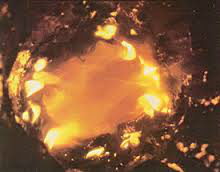As with any other type of fire, the first step that should always be taken is to get everyone out of harm’s way and call the fire department. After everyone is safe and assuming the situation permits without putting yourself in danger, you can first try to cut off the air supply leading to the chimney. To do this close the damper on the chimney or any other pipes to attempt to smother the fire this way. Then close the glass doors or any other fire grate and leave the home. Once outside, take a garden hose and spray water on the roof around the chimney to prevent the roof from catching on fire. Once the fire is completely put out, it is best to monitor the wall temperature of any surrounding walls for the next few hours to ensure no other part of the home catches on fire.
The danger with chimney fires, even after they have been put out, is that if it happened once, it will most likely happen again if no further measures are taken. For this reason, after one of these fires has taken place, it is important to call a chimney professional right away to determine the cause of the fire. Besides removing the reason for the fire after one has raged inside of your chimney walls, prevention is also very important.
The key to preventing a chimney fire is to have a cleaning burning fire.
The Best Ways to Prevent a Chimney Fire
· Only burn seasoned or dried out wood – Wood that is completely dry will sound hollow when hit against another piece of wood, it will be dark in color and may have cracks in the ends. It takes about 6 months for wood to be ready to burn.
· Start fires with clean newspaper or dry kindling – Gasoline or kerosene should never be used to start a fire.
· Never burn cardboard boxes, wrapping paper or your Christmas tree.
· Burn large logs, rather than many smaller logs when possible.
· Get regular chimney inspections and cleanings to remove the excess creosote from the chimney walls and ensure safe burning.



Latest comments
Hi. Please contact to arrange to give a quote for chimney sweeping. Thank you.
Hi Natalya
Please send me a contact number..where are you located?
Hello, can I have a quote for a chimney inspection/cleaning.
Thanks !
I want to purchase a carbon monoxide detector. I live near Polis so can one be posted or sent by courier. Thanks